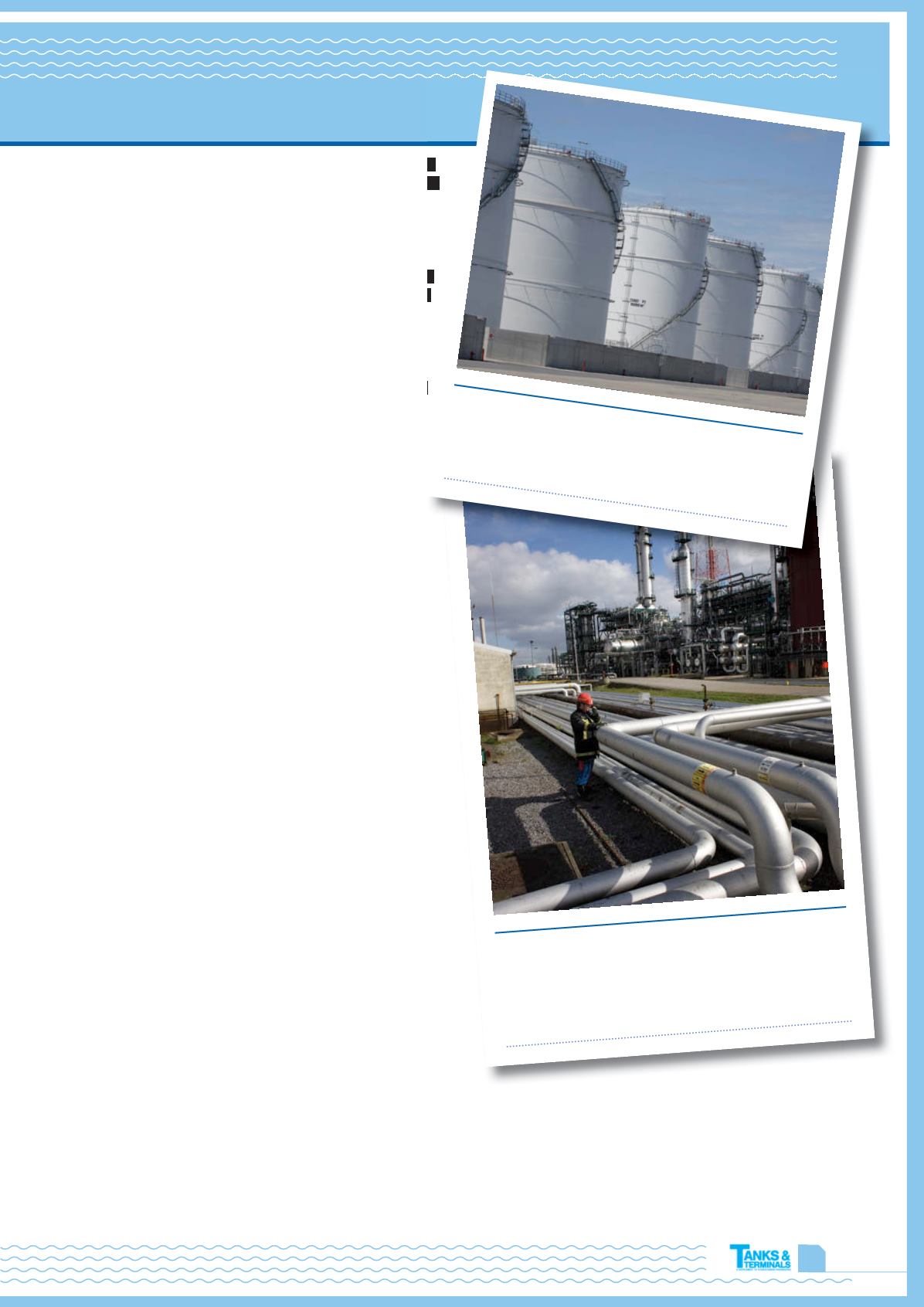
HYDROCARBON
ENGINEERING
87
Antwerp Authority is working on several initiatives. One
of Antwerp’s major assets is its nautical accessibility. The
deepening of the River Scheldt ensured deepsea port
access, with large product tankers, ultra-large gas
carriers and mega-container ships calling much more
frequently.
While accessibility is vital, so too are investments in
infrastructure. Flanders and Antwerp Port Authority are
constructing a second lock in the Waasland Port, and
large investments have been made in the railway
network. The lock will be opened in 2016, and will be
the largest lock in the world. The 16.2 km Liefkenshoek
rail tunnel was officially opened in December 2014 and
enables traffic to cross quickly and directly between
the left bank to the right bank of the River Scheldt,
improving the connection with Europe.
Sustainable, safe and secure
operations
In addition to accessibility and infrastructure
investments, another key pillar for the Port Authority is
creating a sustainable port for the future. Again, several
initiatives are underway. By 2016 it should be possible for
barges in the port to bunker with LNG from a fixed
station. The Antwerp Port Authority is a partner in the
LNG Masterplan for the Rhine-Main-Danube, aimed at
promoting LNG as a fuel and as a cargo for European
barges.
Coupled with this, a land survey is being carried out
with a view to proactively reserve space for future
pipeline investments along the crucial route between
Antwerp, Limburg and the Ruhr area.
The petrochemical industry within the port has also
embarked on several programmes to dramatically reduce
emissions. Members of Essenscia, which represents
some 50 chemical companies, managed to reduce their
NO
X
emissions by 25% from 2009 - 2013. The chemical
industry now represents under 3% of all NO
X
emissions in
Belgium.
Sustainability is twofold: providing a cleaner
emissions-free port, but also a sustainable one in terms
of economic growth and employment. A 2012 report by
the National Bank of Belgium showed that added value
and employment in the Port of Antwerp have risen
sharply. The total added value created by the port
represented 8.7% of the gross domestic product (GDP)
of Flanders. Direct employment represents 2.6% of
employment in Flanders, while the total employment
represents 6.3% of employment in Flanders. At a Belgian
level, the port accounts for 5.0% of the total added
value.
Dedicated oil and chemical team
The Port Authority is very much supportive of further
development in the chemical industry and, in line with
that ambition, it has set up a cluster management
organisation for the oil and chemical sector. The
Pipelines are a crucial transport mode in the
chemical industry. At Antwerp, more than
1000 km of pipelines travel through the
port area, connecting it with the European
hinterland.
At the Port of Antwerp, no less than
16 independent tank storage providers are
active, providing a tank storage capacity of
6.9 million m³.
dedicated oil and chemical team, with its specialist key
account and business development managers, will guide
customers through topics such as:
n
SHEQ regulation.
n
Permits.
n
Employment related aspects.
n
Fiscal regime and incentives.


